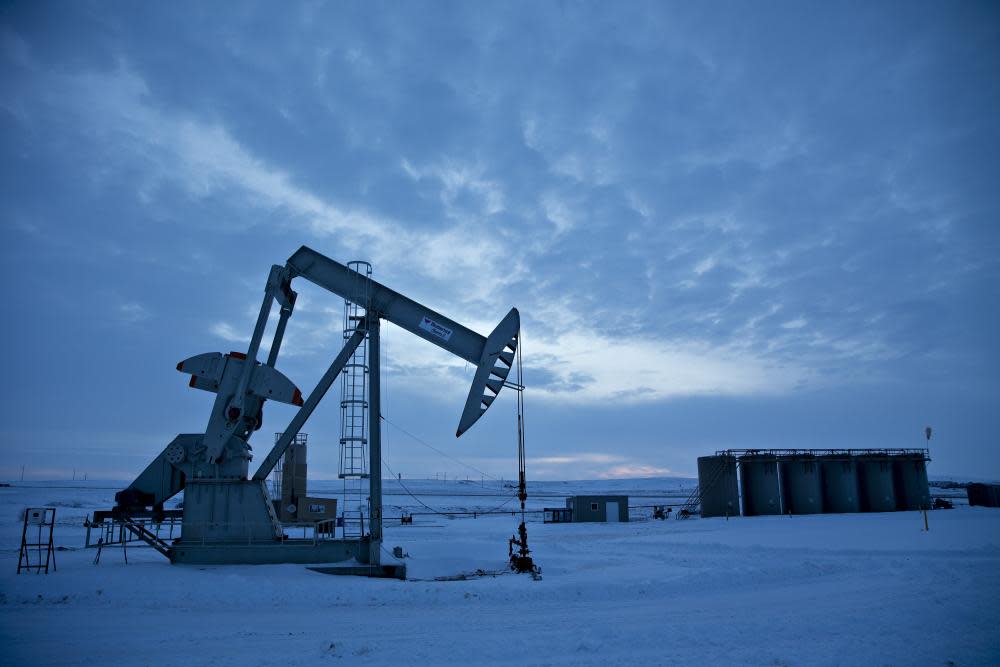Who will clean up the 'billion-dollar mess' of abandoned US oilwells?

Jill Morrison has seen how the bust of oil and gas production can permanently scar a landscape.
Near her land in north-east Wyoming’s Powder River Basin, where drilling started in 1889, more than 2,000 abandoned wells are seeping brine into the groundwater and leaking potent greenhouse gasses.
The problem is getting worse. As the oil and gas industry contracts owing to the pandemic, low prices and the rise of renewables, more than 50 major companies have gone bankrupt in the last year. Joe Biden’s recent order to pause drilling on federal land could drive that number higher. Morrison, a rancher and the head of the Powder River Basin resource council, said the crash was exacerbating the abandonment issue.
“They drill baby drilled themselves right out of business,” Morrison said. “We’re seeing something we’ve never seen before in the oil and gas industry, in terms of the downturn, and there’s going to be a billion-dollar mess to clean up.”
Unplugged wells, either orphaned well, which have no liable party, usually due to bankruptcy, or idle, abandoned ones, where the company has walked away, but could still be liable, cause rampant methane emissions – up to 8% of US total according to a 2014 analysis. They also leak brine, oil and fracking fluid into the groundwater, and carcinogenic gases, like benzine, into the air, and as their numbers increase the impacts grow.
“Methane is a strong greenhouse gas, it’s a precursor for ozone, and harmful for human health,” said Mary Kang, a McGill civil engineering professor who conducted the study. “Even just a few wells can be responsible for big emissions, and there are all the other associated risks, and impacts to wildlife and ecosystems.”
The impacts aren’t just here in the rangy fields of Wyoming. There are unremediated wells in Los Angeles neighborhoods and Pennsylvania farms. There could be as many as 3.2m abandoned wells in the US, according to a 2018 EPA report, but this is probably an undercount because both federal and state programs for regulating and monitoring non-producing wells are incomplete. There are an estimated 2,500 of them in the Powder River Basin alone.
So many have been left uncapped because the regulations and bonding requirements, the money that companies pay ahead of time as insurance, for those wells are so minimal that it’s nearly impossible to hold drillers responsible or to pay for cleanup. Some companies simply walk away from wells, meaning they are still liable; when firms go out of business, they are not.
The penalties for not cleaning up a well are minimal when there’s nothing but a small bond holding a company responsible. “How do you convince operators to comply when there’s no carrot and no stick?” said Frank Rusco, a director in the US Government Accountability Office’s natural resources and environment team.
That means the profits for drilling go to individual companies while the damages, both environmental and financial, are largely borne by the local community and by state and federal taxpayers. “Unplugged wells devalue property, they’re a mess to work around, it can lead to groundwater pollution, and no one is really tracking it,” Morrison said.
The thinktank Carbon Tracker, reports it could cost $280bn to reclaim wells, and public bonding data indicates that states have less than 1% of that money in secure bonds.
Cleanup for an individual well can cost anywhere from $20,000 to $1m. It involves filling it with clay or concrete, covering the surface, replacing topsoil, and removing any pipes or waste like fracking fluid.
Wyoming is shaking the stick harder than other places. In 2014, slumping prices set off a wave of bankruptcies and places like the Powder River Basin were hit hard by abandonment. In response, the Wyoming oil and gas commission upped their bonding fees, but there is still a big gap in funding.
Wyoming has 64,000 orphaned unplugged wells, which would cost an estimated $10bn to remediate, according to an October report from the Carbon Tracker Initiative. Even with the increased bonding requirements, as of the most recent tally the state had about $225m in bonds.
The Center for American Progress recently published a plan for a $2bn orphan well cleanup fund, which would both address the pollution and support 14,000 to 24,000 jobs in energy-producing states like Wyoming. And in September, Senator Michael Bennett of Colorado introduced a bill that included those recommendations to create a federal cleanup fund, and increase minimum bonds.
“I think this is a two-step solution, first would be creating a cleanup fund to address the giant backlog of orphan wells that are scattered across the nation,” said report author Kate Kelly, public lands director at the center. “Then, the heart of the problem is that we have inadequate bonding requirements in places that allow oil and gas companies to walk away and leave taxpayers holding the bag.”

